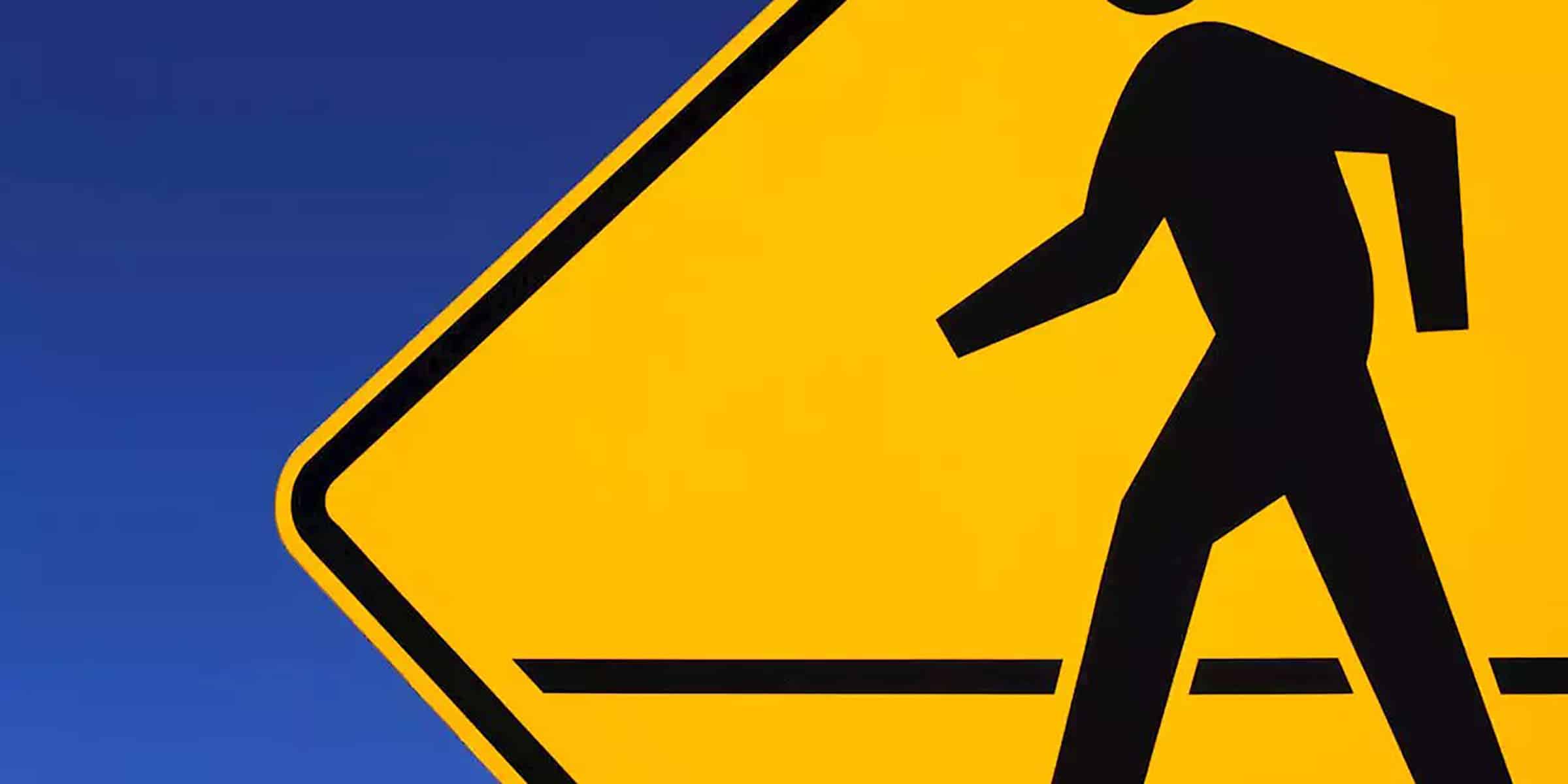Crime No More: Jaywalking To Be Allowed In California ‘As Long As It Is Safe To Do So’
October 12, 2022 | Article by Chain | Cohn | Clark staff | News & Media , Tips & Information Social Share

Starting Jan. 1, it will no longer be illegal to jaywalk in California after Gov. Gavin Newsom signed a bill decriminalizing it. But it also won’t be any safer.
The new law says police officers can only ticket someone jaywalking when there is “an immediate danger of a collision,” and “as long as it is safe to do so.” In other words, pedestrians can legally jaywalk but at their own risk.
The Freedom to Walk Act, or Assembly Bill 2147, was introduced and sponsored by California Assemblymember Phil Ting. The existing jaywalking laws, Ting said, are “arbitrarily enforced” in California and unequally impact poor people who cannot afford to pay the tickets, and people of color, who disproportionately are given the tickets.
Ting cited data from California’s Racial and Identity Profiling Act that showed that “that Black Californians are up to 4.5 times more likely to be stopped for jaywalking than those who are white.”
“It should not be a criminal offense to safely cross the street,” Ting said in a statement. “Plus, we should be encouraging people to get out of their cars and walk for health and environmental reasons.”
Jaywalking laws have been around since the emergence of cars, and is essentially the brainchild of the auto industry. In the 1920s and 1930s, the industry pushed for laws against pedestrians walking on streets so vehicles could have more room to drive.
In the absence of safe and accessible pedestrian infrastructure, residents do their best to access school, work, grocery stores, or parks, argues the California Bicycle Coalition (CalBike), an alliance of people and organizations who share the goal of enabling more people to ride bicycles in California.
“Continuing to criminalize rational, predictable responses to poor infrastructure is unjust,” said Jared Sanchez, CalBike Senior Policy Advocate.
The law now falls to California Highway Patrol to work with the California’s Institute of Transportation studies to submit a report to the state legislature showing how the law will affect public safety and whether or not it will lead to more traffic deaths, according to media reports.
PEDESTRIAN SAFETY
Over the years, street designs primarily considered the needs of drivers, failing to account for people who are not in cars. Additionally, under-resourced communities often do not have adequate infrastructure, such as pedestrian crossing buttons or crosswalks.
That’s the case with Bakersfield and Kern County. A nationwide study listed Bakersfield as the No. 2 most dangerous metropolitan area in the United States to be a pedestrian. That “Dangerous by Design” study by Smart Growth America analyzed government data from 2010 to 2019 to create a Pedestrian Danger Index. In that time period, 260 pedestrians died in Bakersfield.
Our streets are designed primarily for the convenience of drivers, and not the safety of pedestrians, the study found. Many places still lack the safest infrastructure for walking, the study found. For example, crosswalks, if they exist at all, are often spaced so far apart as to be impractical, or don’t provide enough time for some adults to safely cross. Wide lanes also encourage high speeds, and many streets are designed with wide turning lanes that allow cars to make right turns through crosswalks at high speed. Some of the reasons for the high number of pedestrian deaths includes more SUVs on our roadways, drug and alcohol use, warm weather, and increased cellphone use.
Nationally, deaths involving pedestrian soared 13% from the year before. An estimated 7,485 pedestrians were killed in 2021, a 40-year high.
HOW TO STAY SAFE
Here are some safety tips that pedestrians and drivers can use to decrease accidents, and potentially save lives:
Drivers
- Look out for pedestrians, especially in hard-to-see conditions such as at night or in bad weather.
- Slow down and be prepared to stop when turning or entering a crosswalk where pedestrians are likely to be.
- Stop at the crosswalk stop line to give drivers in other lanes an opportunity to see and yield to the pedestrians, too.
- Be cautious when backing up; pedestrians, especially young children, can move across your path.
Pedestrians
- Be obvious and predictable, crossing at crosswalks or intersections only, walk facing traffic and as far from traffic as possible if there is no sidewalk
- Make eye contact with drivers; never assume a driver sees you
- Look left-right-left before stepping into a crosswalk. Having a green light or the “WALK” signal does not mean that it is safe to cross
- Look for cars baking up, including white backup lights or signs the vehicle is running.
- Don’t dart out between parked cars
- Avoid distractions. Don’t walk and use your phone at the same time
- Wear bright clothing during the day and reflective materials at night
- Be predictable. Follow the rules of the road, cross at crosswalks or intersections, and obey signs and signals.
- Walk facing traffic, and if there is no sidewalk, walk as far from traffic as possible.
- Pay attention to the traffic moving around you. This is not the time to be texting or talking on a cell phone.
- Make eye contact with drivers as they approach. Never assume a driver sees you.
- Wear bright clothing during the day and reflective materials (or use a flashlight) at night.
- Look left, right, and then left again before crossing a street.
———
If you or someone you know is injured crossing the street due to someone else’s actions, contact the pedestrian accident attorneys at Chain | Cohn | Clark by calling (661) 323-4000, or fill out a free consultation form, text, or chat with us at chainlaw.com.
